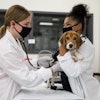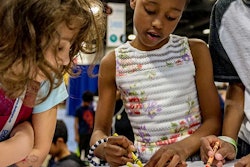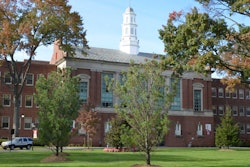As the first Black woman astronaut, Dr. Mae Jemison is used to breaking barriers. But like many accomplished women in science, technology, engineering and math (STEM) fields, Jemison has experienced discriminatory treatment during the formative years of her training.
As a college student, Jemison encountered what a majority of female scientists reported in a new national survey as they pursue STEM careers: demoralizing discouragement by a college professor.
She distinguished herself early as a high-achieving student passionate about science and during grade school teachers nurtured her enthusiasm. But the college laboratory proved an unwelcoming environment, said Jemison, who earned a B.S. in chemical engineering from Stanford University and an M.D. from Cornell University.
“I never had a direct confrontation,” she said, adding that some professors “doubted my intellectual capabilities,” and tried to make feel “like I didn’t belong.”
In a survey of women and under-represented minority chemists and chemical engineers, 40 percent reported that they had been subjected to discouragement at one point in their STEM education and career. For 60 percent of respondents, college was where most of that attempted dissuasion occurred and college professors were often the source.
The Bayer Facts of Science Education series of survey looked at the root causes of underrepresentation in STEM fields by gauging the experiences of female, African-American, Hispanic and American Indian scientists from childhood through the workplace, said Greg Babe, president and CEO of the Bayer Corporation.
The survey, released Monday, found social and economic factors at the center of the disparity, noting that like other children, women and minorities showed early interest in the sciences but it was rarely nurtured or encouraged as they matured through their teen years.
“To remain competitive we need a vibrant pool of STEM workers,” Babe said. “It’s not just about corporate competiveness. It’s about the country’s competitiveness.”
From reinforced stereotypes about scientists to poor schools that fail to prepare many minorities for college science programs, survey respondents faulted the education system for the obstacles that keep the STEM fields homogenous.
“It was interesting how much of it mirrored the experiences I had growing up and those of my colleagues in college,” Jemison said during a conference call Monday. “Many children hit roadblocks and are derailed from their path by biases that make them fall out.”
Even in their own companies, professionals who themselves faces a number of barriers reported a lack of opportunities for advancement for women and people of color.
Science and technology firms, such as Bayer, must also increase their outreach to communities of color and women, and spread awareness about STEM career opportunities to them, Jemison said.
“In their own neighborhoods there aren’t scientists and engineers,” she said. “Students have no control over these things and as adults we do control this and have an opportunity to change this.”
Women were more likely to cite a lack of self-confidence as a barrier to their careers, a challenge Jemison surmounted with positive internship experience and encouragement from other university departments like African-American studies.
To help broaden the pipeline, she said exposure, experiences, and expectations of achievement will build the confidence of both women and minorities to seek out internships and opportunities.
Here are some other main points from the survey:
? More than three-quarters (77 percent) said significant numbers of women and under-represented minorities are missing from the U.S. STEM work force today because they were not identified, encouraged or nurtured to pursue STEM studies as youngsters.
.
? The top three causes/contributors to underrepresentation in STEM include lack of quality science and math education programs in poor school districts (75 percent), persistent stereotypes that say STEM isn’t for girls or minorities (66 percent) and financial issues related to the cost of education (53 percent), according to the survey respondents.
? They said science teachers play a larger role than parents in stimulating and sustaining interest in science. During the elementary school years, 70 percent of the respondents say teachers have the most influence. During high school, 88 percent said teachers do.
? Nearly two-thirds (62 percent) of those polled said underrepresentation of women and minority STEM professionals exists in their company or organization.
? Leading workplace barriers for the female and minority chemists and chemical engineers include managerial bias (40 percent), company or organization bias (38 percent), a lack of professional development (36 percent), no/little access to networking opportunities (35 percent), and a lack of advancement opportunities (35 percent).
? Nearly three-quarters (70 percent) of the chemists/chemical engineers said it is harder for women to succeed in their field than it is for men, while more than two-thirds (67 percent) think it is more difficult for minorities to succeed than it is for nonminorities.
? Across the board, respondents gave their companies and organizations a “C” grade in terms women and under-represented minorities being in senior positions to serve as role models and mentors for younger employees.


















